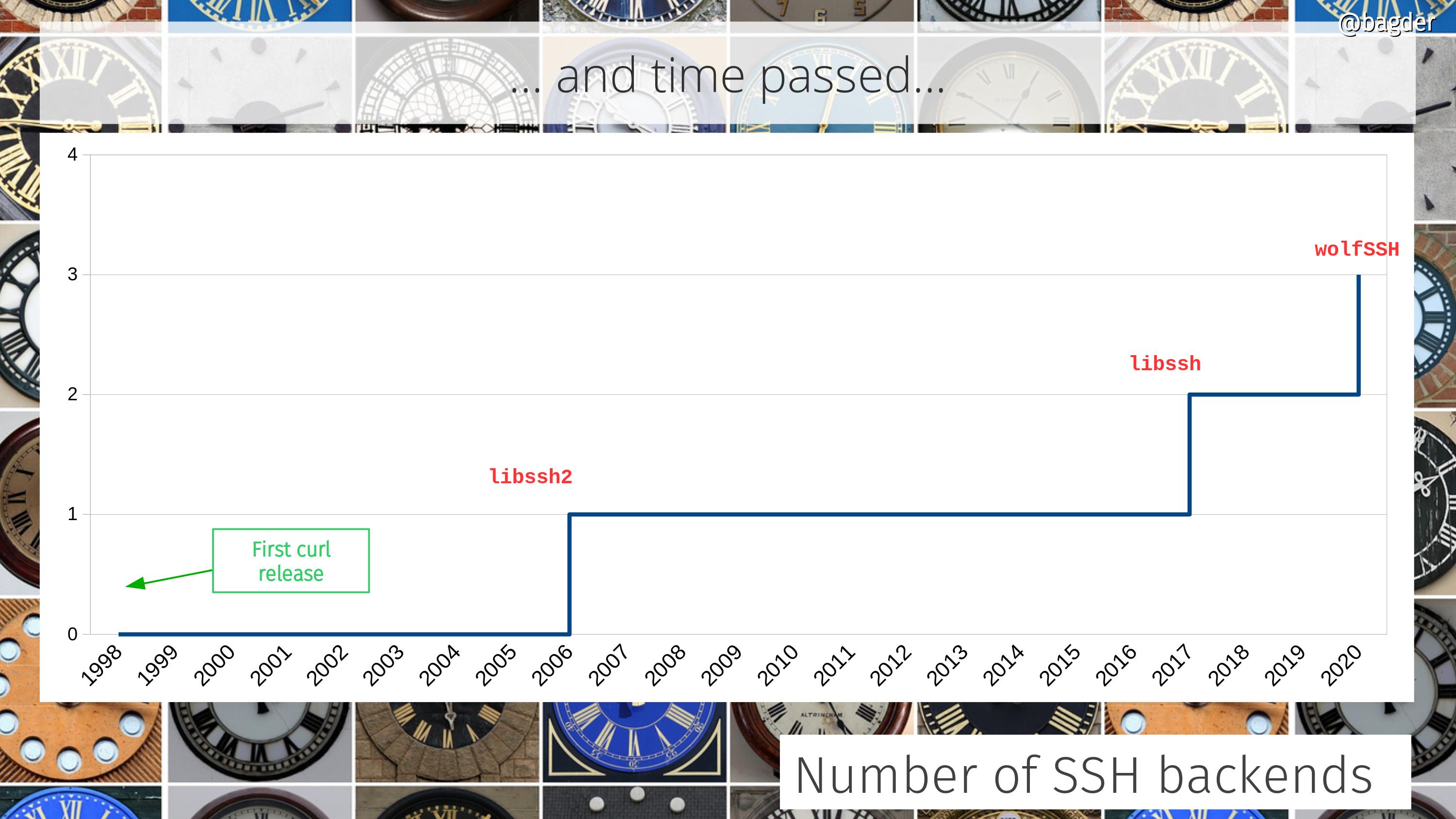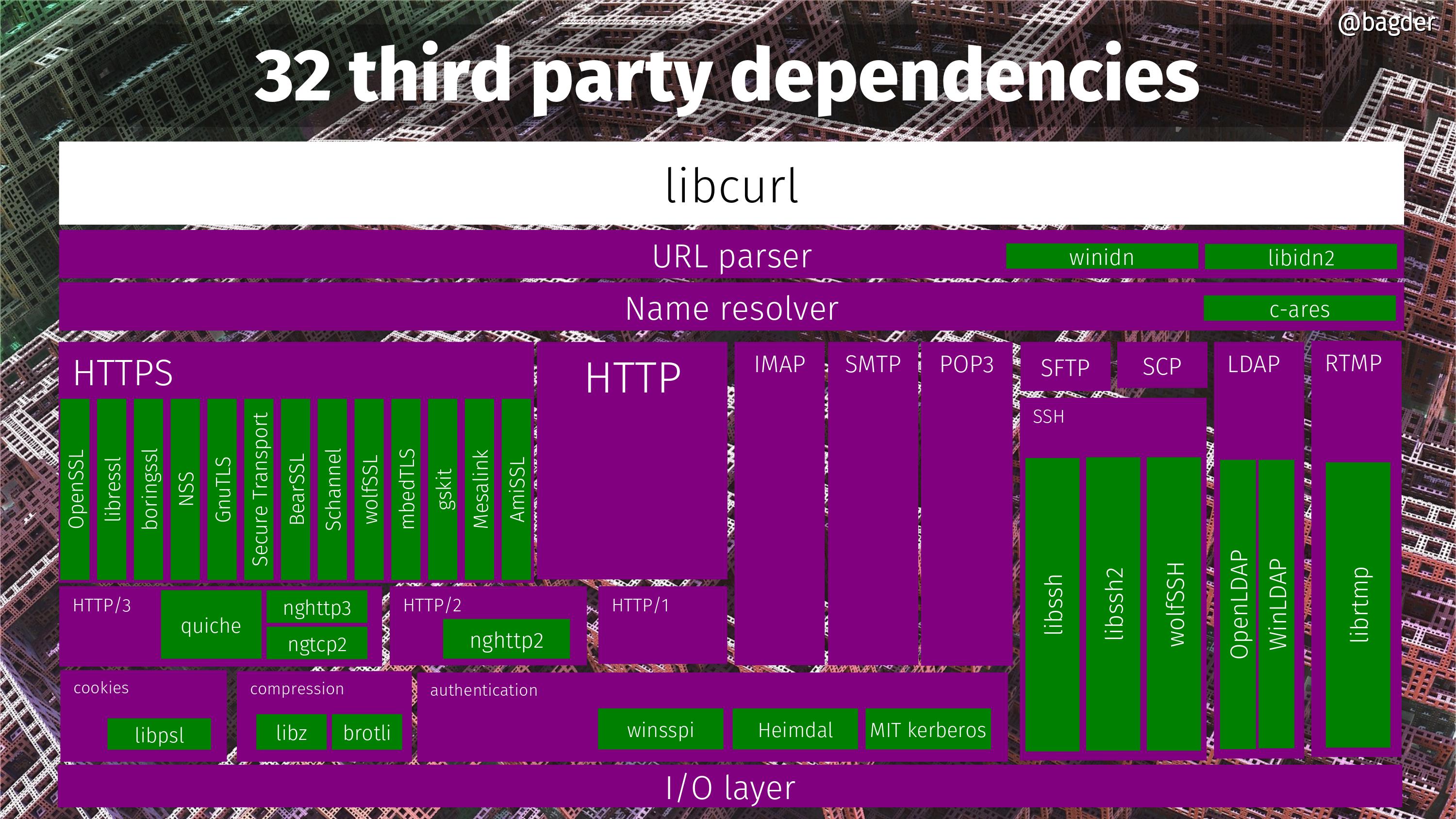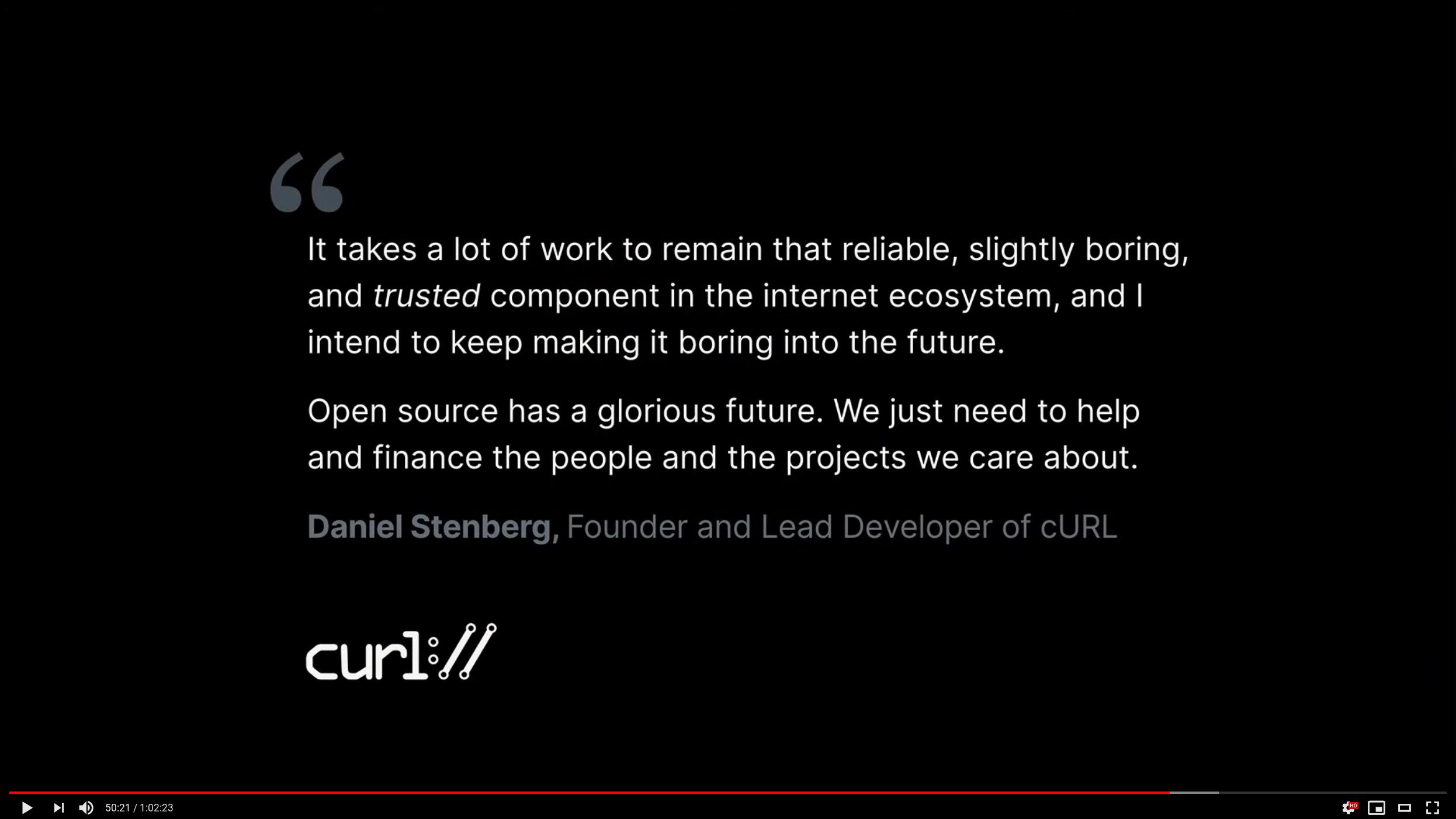I’m personally familiar with Backblaze as a fine backup solution I’ve helped my parents in law setup and use. I’ve found it reliable and easy to use. I would recommend it to others.
Over the Christmas holidays 2019 someone emailed me and mentioned that Backblaze have stated that they use libcurl but yet there’s no license or other information about this anywhere in the current version, nor on their web site. (I’m always looking for screenshotted curl credits or for data to use as input when trying to figure out how many curl installations there are or how many internet transfers per day that are done with curl…)

libcurl is MIT licensed (well, a slightly edited MIT license) so there’s really not a lot a company need to do to follow the license, nor does it leave me with a lot of “muscles” or remedies in case anyone would blatantly refuse to adhere. However, the impression I had was that this company was one that tried to do right and this omission could then simply be a mistake.
I sent an email. Brief and focused. Can’t hurt, right?
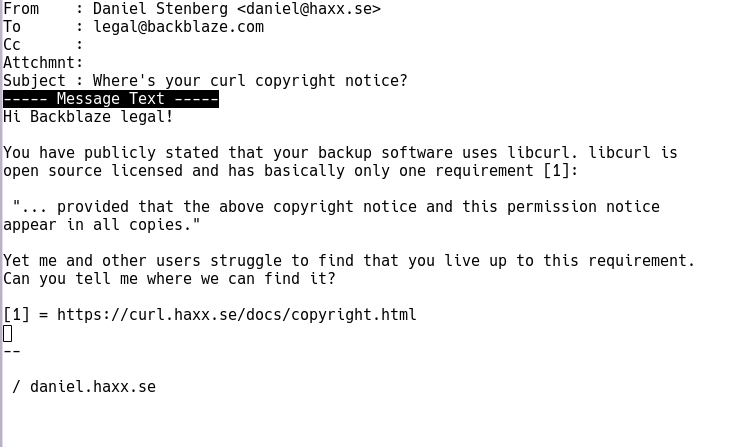
Immediate response
Brian Wilson, CTO of Backblaze, replied to my email within hours. He was very friendly and to the point. The omission was a mistake and Brian expressed his wish and intent to fix this. I couldn’t ask for a better or nicer response. The mentioned fixup was all that I could ask for.
Fixed it
Today Brian followed up and showed me the changes. Delivering on his promise. Just totally awesome.
Starting with the Windows build 7.0.0.409, the Backblaze about window looks like this (see image below) and builds for other platforms will follow along.
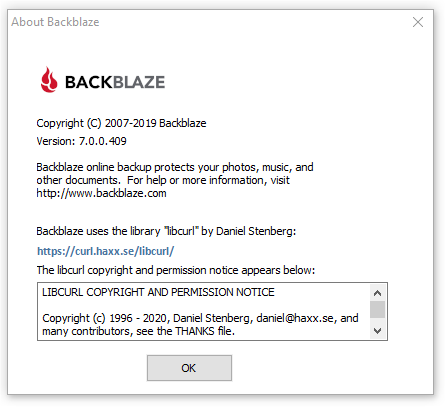
15,600 US dollars
At the same time, Backblaze also becomes the new largest single-shot donor to curl when they donated no less than 15,600 USD to the project, making the recent Indeed.com donation fall down to a second place in this my favorite new game of 2020.
Why this particular sum you may ask?
Backblaze was started in my living room on Jan 15, 2007 (13 years ago tomorrow) and that represents $100/month for every month Backblaze has depended on libcurl back to the beginning.
/ Brian Wilson, CTO of Backblaze
I think it is safe to say we have another happy user here. Brian also shared this most awesome statement. I’m happy and proud to have contributed my little part in enabling Backblaze to make such cool products.
Finally, I just want to say thank you for building and maintaining libcurl for all these years. It’s been an amazing asset to Backblaze, it really really has.
Thank you Backblaze!




